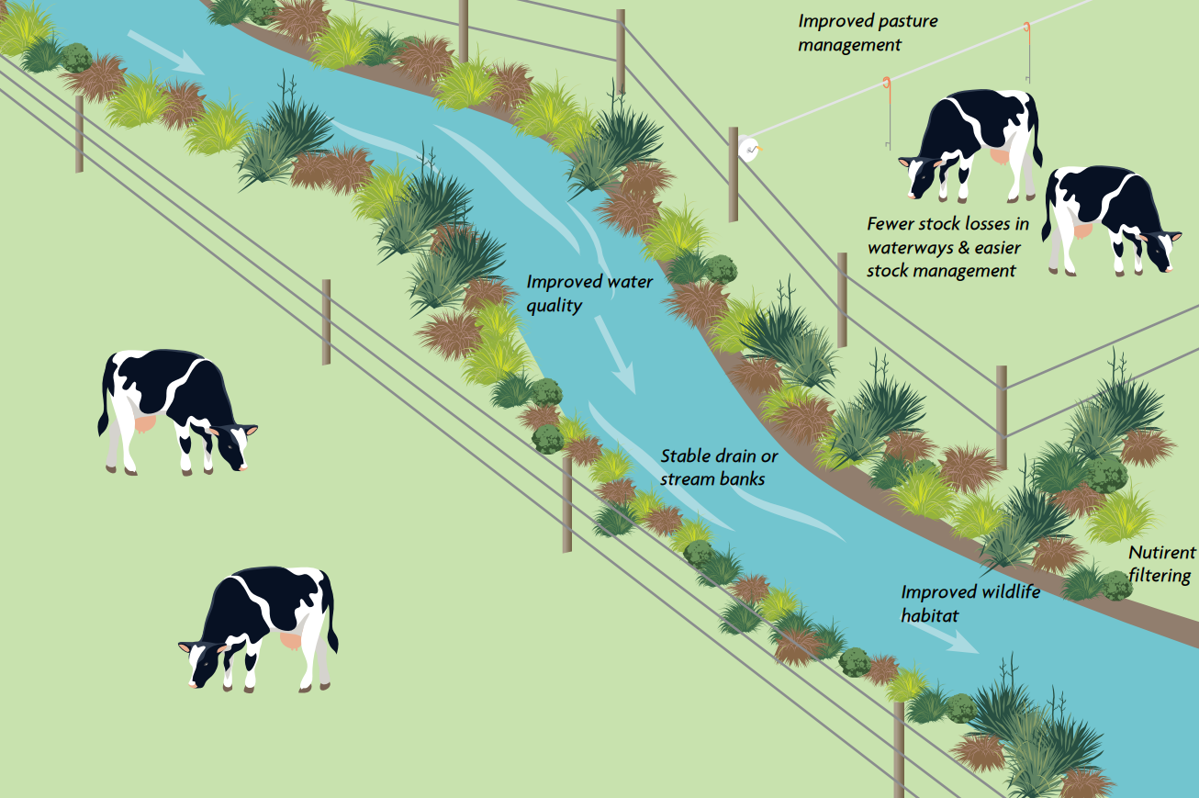Fencing waterways
2 min read
Fencing waterways has many benefits, including protecting freshwater from nutrients, effluent and sediment, improving water quality, and creating habitat for birds and freshwater species. Along with protecting waterways, new fencing can be an opportunity to improve grazing management and stock control.
When planning your fencing, make sure you meet national stock exclusion regulations. These state that dairy cattle must not have access to lakes and wide rivers and that new fences must be at least 3 metres from the edge of the bed of the waterbody.
Note that the regulations for intensive winter grazing are different. These require livestock to be kept at least 5 metres from the bed of any river, lake, wetland or drain (regardless of whether there is any water in it at the time).
For waterways, your fence does not have to be exactly at the same distance from the bed into the paddock along its whole length. You may like to consider increasing the distance at certain points to encompass particular risks to water quality, such as critical source areas.
As well as fencing lakes and waterways, fencing should be extended to protect seeps, wetlands, swamps, springs and critical source areas. Keep in mind, fencing in erosion or flood prone areas may need a wider set back than other areas.
Start by mapping your waterways and creating a fencing plan. Consider the overall layout of your farm.
Plan out fence lines and crossing points. Think about whether a waterway might change course or meander over time, which could mean fencing adjustments need to be made.
If you are planning on planting your riparian margin, it’s best to have the fence between the paddock and the plantings so they are protected from livestock. This might mean that the fence is placed is further from the waterway than the regulations require.
Once fenced, the riparian area will require continuous weed, pest and animal control. Planting these areas is worthwhile as there are many benefits for your farm and the environment – for more information, see our riparian planting and biodiversity pages.

If you are fencing in flood-prone areas, consider the following:
If you need to maintain access for machinery to clean weeds, silt or debris from your waterway, consider these options:
Now’s the perfect time to check in, plan, and set up for a strong season. We’ve pulled together smart tips and tools to help you stay ahead all winter long.
Whether you prefer to read, listen, or download handy guides, we’ve got you covered with trusted tools to support your journey every step of the way.
Put our proven strategies and seasonal tools to work. Boost production, support animal health and watch your profits hum.
Tools that are backed by science, shaped by farmers and made for this season.
That’s Summer Smarts.